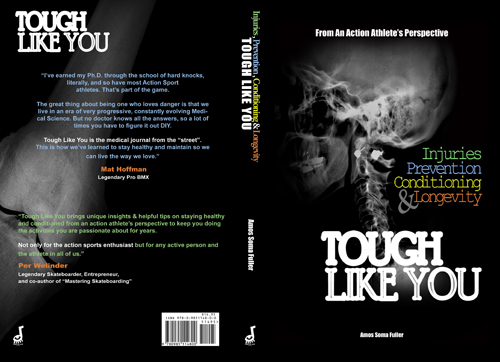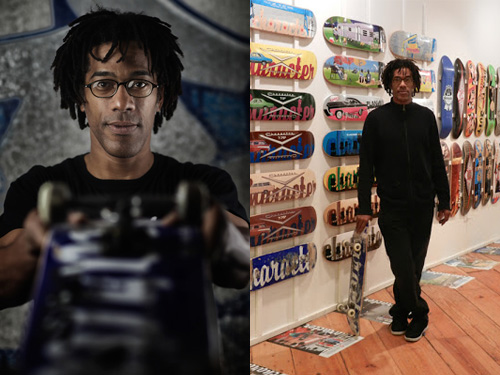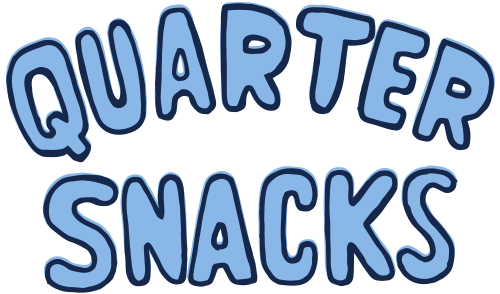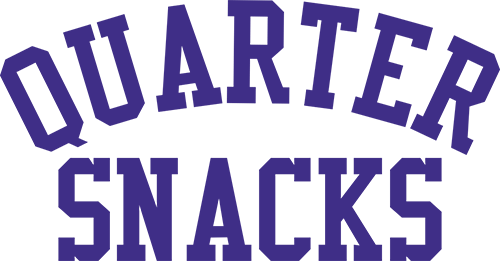
The good thing about that night was that I made out with a 45-year-old divorcée. The bad thing was my terrible hangover the next morning. Against hindsight’s judgment, I went straight to a perilous spot, even though it was cold and there was snow on the ground, because I had shoveled it clear the previous day. I wanted to skate this flat bar to drop before I left town.
My eventual goal was a switch front board slide, but I found the rail slicker than anticipated on my first regular boardslide attempt. My board shot forward while my body descended straight down. I was aware that my penis was approaching the end of this rail and changed my body to avoid contact. I touched ground with my left foot first, then felt my left knee bend incorrectly as my body weight compressed down. Pain indicated the mishap and I kept saying “fuck” as I bent my knee to test. I eventually walked around some and got in the car, but I knew that my life had just changed. After a spring of continuing to twist my knee, an MRI confirmed my torn left ACL. On July 7, 2011, I took a left ACL replacement surgery, the same surgery I had on my right knee five years earlier.
An additional surgery on December 7 to trim my torn meniscus was a further complication, but I used adult strength and previous experience with ACL recovery to help me heal as well as possible. My physical therapist and I developed daily exercise programs that built muscle while also allowing time for rest and recovery between all activity. Being on one’s feet at all is an activity after surgery. As I strategized for an optimal recovery, a convenient retweet from Josh Kalis led me to Tough Like You by Soma Fuller. Fuller is a senior writer at Focus magazine and Tough Like You is fruit of his 20 years of studying skating, healing and injury prevention.
You understand the importance of a strong body for this skate undertaking. In Tough Like You, Fuller combines his knowledge with the testimony of other skaters and health experts to create the richest, densest and most accessible document on skateboarder health in existence. The concern is not with the judgmental why that often accompanies post-trauma introspection, rather how a properly maintained body works and recovery happens. An array of preventions, remedies, practical experiences, advice and solutions for a successfully skating body make up this 240 page text that reads fast and is filled with personal narrative.

People who don’t skate don’t fall that much, and it is in every skater’s best interest to understand the mechanics of proper falling. Fuller includes instruction gleaned from his participation in U.S. Army Airborne Jump School. The only depiction of an injury in Tough Like You is a photo sequence of Corey Hendricks tearing his ACL trying to hardflip an 8 stair. Fuller uses the sequence to illustrate how a flailing body quickly compressed leads to the twists that injure, rather than the preferable tumbling rolls.
The second section of Tough Like You is entries from Jerimiah Smith, Patrick Melcher, Silas Baxter-Neal and eight other men and women. In two-to-ten pages apiece, each rider contributes testimony and knowledge to help us see how a skateboard is both a perilous object and a rolling life raft. The riders who have suffered serious injuries offer their hard won wisdom, while those who have sustained fewer injuries offer a preventative perspective. Similarly, testimonials from BMX riders, surfers and rock climbers are helpful in their ways. Certain subjects repeat throughout these narratives, including yoga, stretching, rest, fish oil, flaxseed oil and glucosamine. All agree that the main contributors to a successful skate lifestyle are diet, flexibility, conditioning and experience.
Four healthcare professionals share their knowledge in the third section. These are not doctors discussing surgery, but experts in bodywork, acupuncture, diet, personal training and public health. Stretching is again at the top of everyone’s list, and you also find out about self massage, circadian rhythm, packing for snacking and hypnosis/pre-visualization. The same brain muscles are activated when you visualize doing something as when you are doing it. Before my 2011 surgeries, I could not 360 flip. Now I can.
In Fuller’s closing words, he tells of the recoveries and practices that have led to him being a 45-year-old active skater who no longer consumes narcotics. I have met him and he exudes healthful energy. He mentions sparring with a 100-pound boxing bag in the darkness for an hour as a way of helping his balance. He also recommends showering or bathing after exercise as a way to take stock of what your body encountered during the day. I credit Tough Like You for giving me the idea of writing ABCs with my ankles and wrists before I leave bed in the morning. Standing, 20 hip circles each way are another simple, beneficial addition to one’s life. For the past year, I have practiced yoga multiple times a week and can see how consistent stretches help tone and prepare a body. There is a world of difference between thinking about doing something and doing it. Armed with these collected teachings and an open mind, anyone can find room for improvement.
Visit ToughLikeYou.com for more info & to purchase the book. Pre-order Soma’s next book, Stretches in Bed, to be released February 1.






Soma knows what’s up. Dude skates more then 14 teen year kid old filming a sponsor me tape.
‘if you can’t ollie up it, don’t ollie down it.’ words i now live by.
for sure getting that book, though.
Yoga has helped my skating a lot as an adult.
Soma’s an OG, full of knowledge and does nothing but help the skate community.
Why have I not heard of this before?! After having 6 knee surgeries and 3 ankle (15 pins and two plates after a skateboard injury) my skating days are over, but still get out to rip my other boards: snow, wake, surf. This is exactly what I’m looking for, not just some other sport’s therapist/doctor but someone who understands board related injuries and prevention.
Can’t wait to pick this up, thanks :)
Just had my 2nd visit to the ER in the past year from skating. This post is timely. As a somewhat aging skater, I ordered this book right after reading this.
Thanks Galen, nice review & great recommendation for aging skaters dealing with ‘growing pains’
Any chance you guys are going to re-edit westgates new Part? They released the b-roll and its siiiicck.
Sitting here with a brace on my ankle from my trip to the ER yesterday. I agree that it’s a timely post and am gonna have to buy this. Incidentally (pun intended), I read something somewhere where Brian Anderson said that little curbs are the sketchiest. I’m sure that big vert and jumping down stairs and shit makes for bigger injuries, but I bet most trips to the ER by average skaters involve trying small tricks in small spaces.
packing for snacking? sounds good. i’ll have to take a look at that.
my daddy bought me an apt. so i feel obliged to make skate videos
@green daddy Gotta get over that shit in 2013. Yes, some people involved in skateboarding come from money, while others come from nothing. Some of your favorite pros might be trust fund babies, who cares, forever.
If that dude is gonna put out vids like that his dad can buy him 13 apartments, who gives a shit.
you can’t pick your parents, Dudes super nice and makes a great FREE video
rich kids always back other rich kids. thanks james
Get with the times bro. It’s not 2009 anymore!
http://quartersnacks.com/2011/10/end-of-an-era-bodega-across-from-tompkins-officially-closed/#comment-27564
I hate rich kids with no creativity too. I can’t believe dude is relevant anymore; we should get over it now, and forget about “the crew”.
I’m over that “shit”, for sure James.
i like turtles.
teirney and i need to reunite